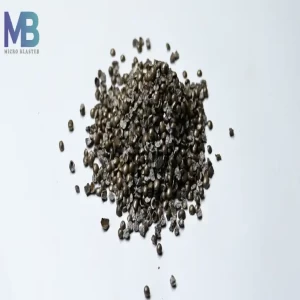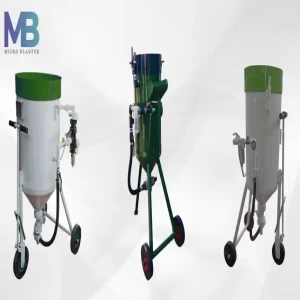Search

What is Vapor Blasting?

Vapor Blasting
Vapor blasting is likewise regularly known as wet blasting, fluid sharpening, vapor sharpening, dustless blasting, or slurry blasting. Inside of Wet Blast Cabinet Wet blasting (vapor blasting) is a cycle for eliminating foreign substances from a surface or completing a surface utilizing pressurized water and abrasive blast media.
On the off chance that the abrasive media is blended in with water and pressurized in a pressing factor pot prior to being moved through a blast spout and blended in with packed air. This cycle is by and large known as slurry blasting. (The blend of blast media and water is known as a slurry).
Advantages of Wet Blasting
The greatest preferred position of wet blasting is it creates a better completion on a surface than customary dry blasting. The water flushes out the abrasive, so there is no impregnation of the impacted surface. Any silt or remaining abrasive media is cleaned out. This leaves a cleaner surface. Vapor blasting is favored when you have a surface that you might want to safeguard. By utilizing a slurry blaster or vapor blasting bureau, you can perfect, de-oil, and impact a surface in one stage. This recoveries impressive time over conventional dry abrasive blasting. Also, you can utilize a lot better abrasive media with wet blasting, as the water is a more successful course for fine cross-section abrasives than compacted air.
Differences Between Vapor Blasting and Dry Blasting
Vapor blasting is for the most part a lot gentler than dry abrasive blasting. The water goes about as a pad for the abrasive. In a conventional dry sand blasting machine, the abrasive affects the surface, and consequently breaks into more modest particles, causing dust. In wet blasting, the water goes about as a dampener. At the point when the abrasive hit the impacted surface, the broken particles are contained inside the water. The spent media is gathered in a channel bowl or other container.
There is another striking distinction between dry blasting and vapor blasting. In dry blasting, the abrasive effects at a point, leaving a profound anchor profile. In wet blasting, the water pads the effect, which means the surface profile is scattered all the more equally, in a feathered example. This considers a better blasting method.
How Vapor Blasting Works
In outside dustless blasting, the abrasive is typically moved to utilize packed air. A subsequent hose will either present water at the blast spout (water infusion) or make a corona of water that smothers a portion of the residue made by blasting (water ring or water radiance). In a slurry blast cabinet, water and abrasive media are combined in a pressurized compartment, at that point moved at an article inside the fenced-in area. This is viable for cleaning or stripping things like motor parts or aluminum wheels.
Some outside dustless blasting units join the water and abrasive together in a slurry, and this blend is pressurized in a vessel, utilizing either packed air or water to make the pressing factor. At that point, the slurry is infused into the wind current of the blast hose.
Abrasive Media That Can Be Used in Dustless Blasting
Any sort of blast media can be utilized, however, glass beads or a blend of sodium bicarbonate and fine glass beads are ordinarily utilized in the wet blasting cabinet.

